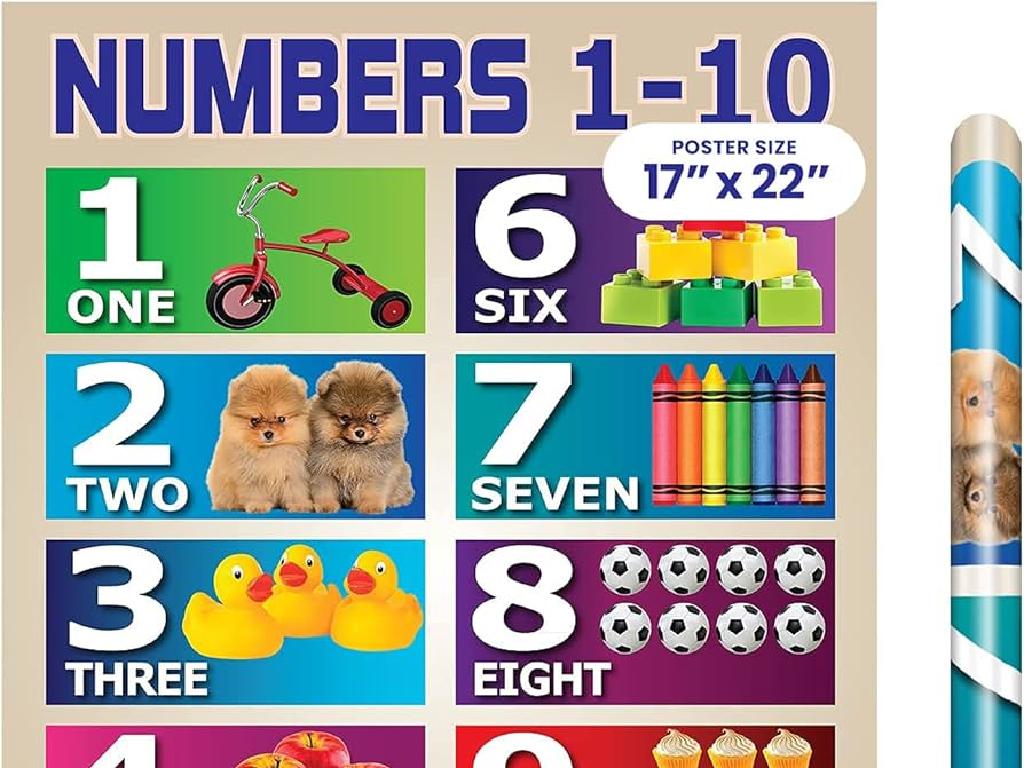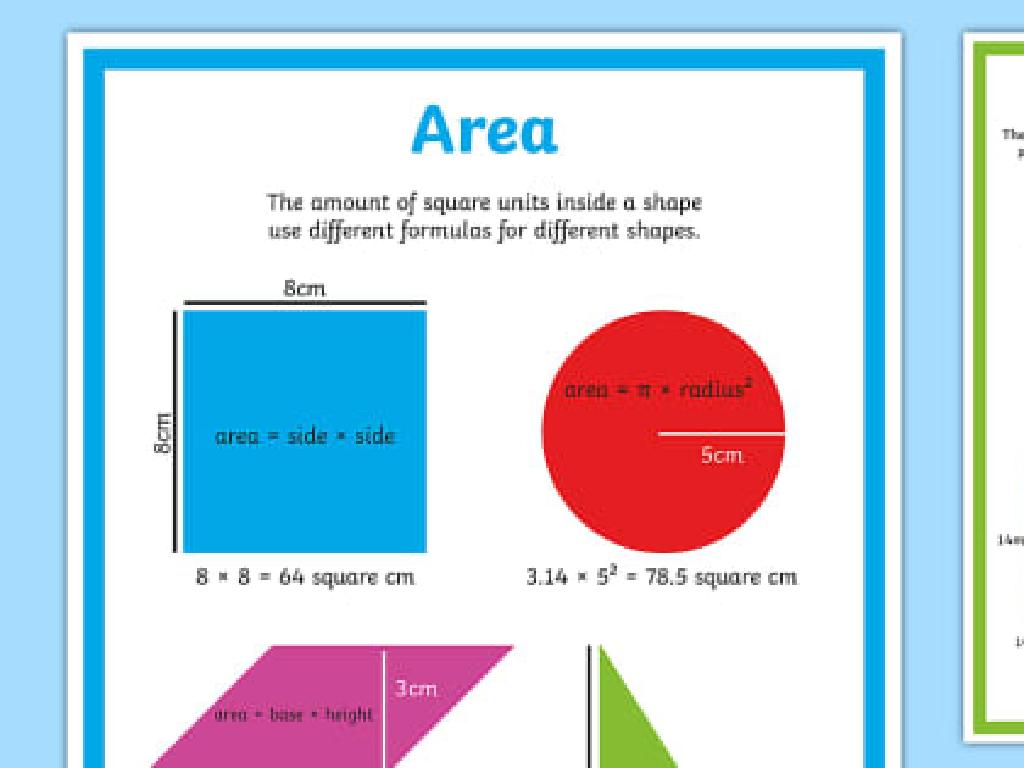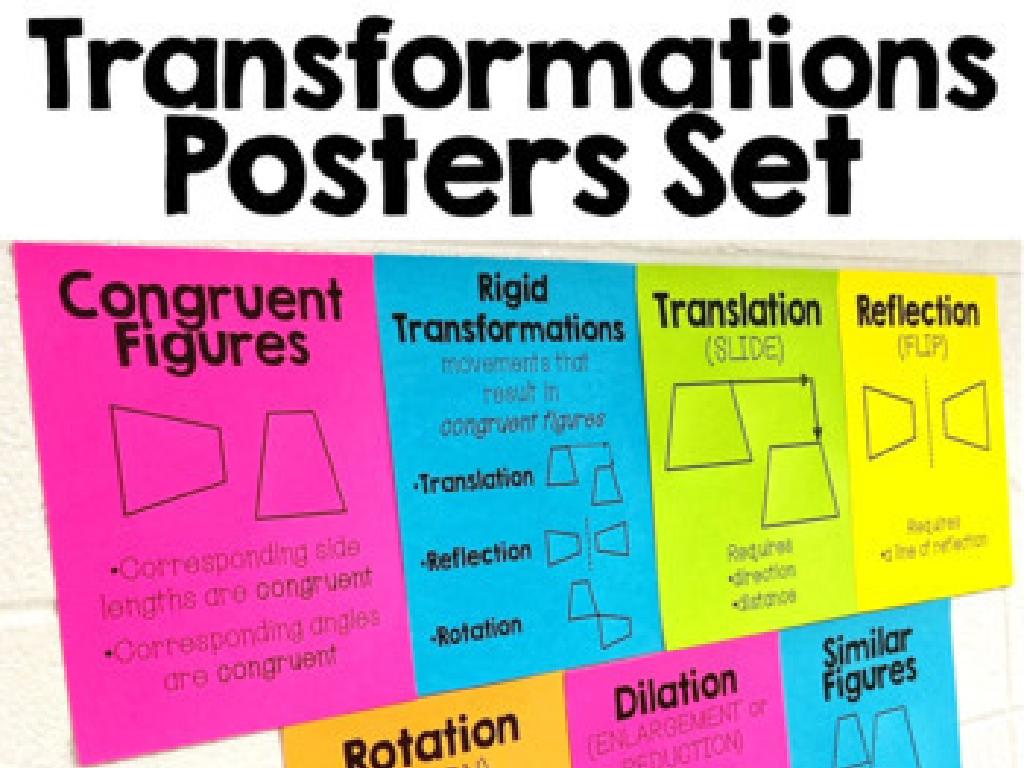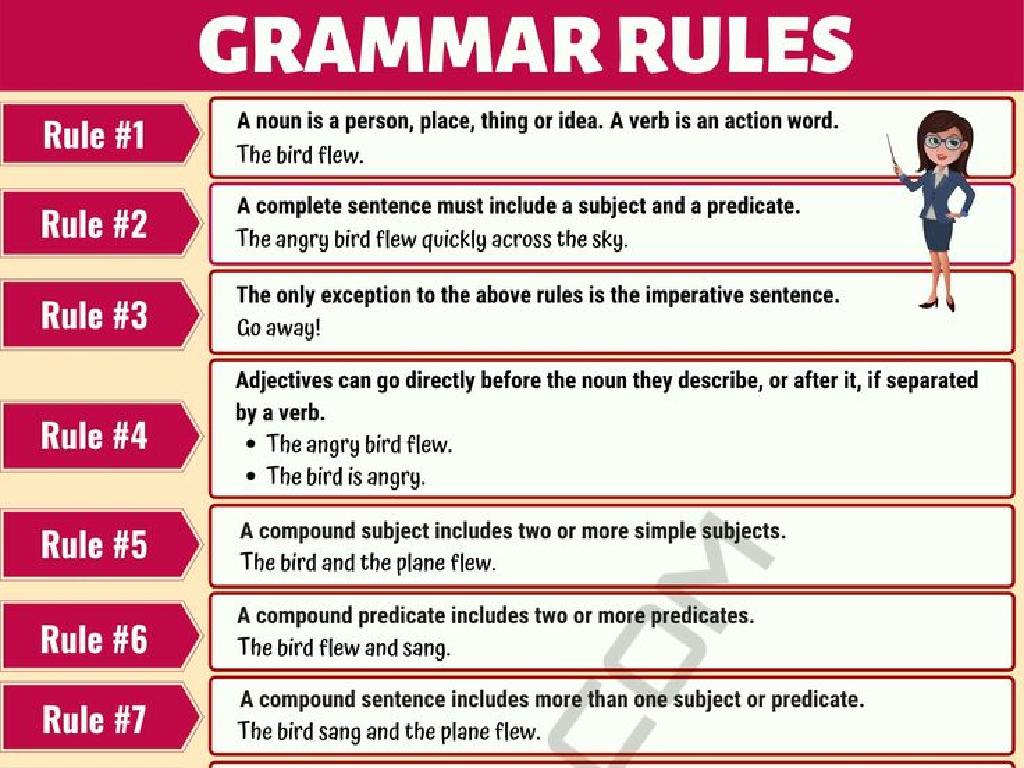Interpret Double Bar Graphs
Subject: Math
Grade: Sixth grade
Topic: Data And Graphs
Please LOG IN to download the presentation. Access is available to registered users only.
View More Content
Interpreting Double Bar Graphs
– What is a double bar graph?
– A graph that displays two sets of data side-by-side for comparison.
– Comparing data with double bar graphs
– Look for patterns, differences, and similarities between the two datasets.
– Double bar graphs in daily life
– Used to compare survey results, weather patterns, or class test scores.
– Reading and interpreting examples
|
This slide introduces students to double bar graphs, a key tool in data representation. Begin by explaining that a double bar graph is used to compare two sets of data side-by-side, making it easier to see differences and similarities. Emphasize the importance of these graphs in various real-life situations, such as comparing preferences in a survey or analyzing temperature changes over months. Provide clear examples on the board and guide students through the process of reading and interpreting the information presented in double bar graphs. Encourage students to ask questions and discuss how the visual representation helps in understanding complex data.
Understanding Double Bar Graphs
– Define a double bar graph
– A chart displaying two bars per category to compare data sets.
– Compare with single bar graphs
– Unlike single, shows two sets of data side-by-side for comparison.
– Real-life double bar graph examples
– Temperature changes over months, exam scores in different subjects.
– Analyzing double bar graphs
– Look for patterns, differences, and trends in paired data sets.
|
This slide introduces students to double bar graphs, a tool for comparing two sets of data side-by-side within the same categories. It’s important to highlight the differences between single and double bar graphs, emphasizing that double bar graphs allow for direct comparison between two related data sets. Provide relatable examples such as comparing temperatures across months in two different years, or comparing test scores in two subjects. Teach students to analyze these graphs by looking for patterns, differences, and trends that can give insights into the data being compared. Encourage them to think of other scenarios where a double bar graph could be useful.
Interpreting Double Bar Graphs
– Understand X-axis and Y-axis
– X-axis is horizontal, Y-axis is vertical. They represent different variables.
– Bars show distinct data sets
– Each bar pair compares two sets of data side by side.
– Legend: Key to the graph
– A legend explains what each color or pattern in the graph represents.
– Reading the graph correctly
– Analyze the length of bars to compare values across categories.
|
This slide introduces students to the basics of interpreting double bar graphs. Start by explaining the axes: the X-axis typically represents categories, while the Y-axis shows values or frequencies. Emphasize that each pair of bars represents a comparison between two data sets for the same category. The legend is crucial as it helps to distinguish between the data sets. Teach students to read the graph by comparing the height or length of the bars, which indicates the value of the data. Use examples like comparing test scores in different subjects or temperatures in two cities over a week.
Interpreting Double Bar Graphs
– Identify categories and variables
– Categories represent different groups, variables are what we measure
– Compare bars’ lengths
– Longer bars represent larger values; compare them to understand differences
– Interpret the data’s story
– What trends or patterns do you see? What does it suggest about the categories?
– Discuss real-world implications
– How can this data be used in real life? Think about businesses, science, etc.
|
This slide aims to teach students how to read and interpret double bar graphs. Start by explaining the importance of identifying the categories (e.g., types of fruits) and variables (e.g., sales in dollars). Then, guide students to compare the lengths of bars to understand which categories have higher or lower values. Encourage them to interpret the data by looking for trends or patterns that can tell a story about the information presented. Finally, discuss how interpreting such data can have real-world applications, such as in business decisions or scientific research. Provide examples and encourage students to ask questions about the graphs they will encounter.
Creating Our Own Double Bar Graph
– Collect data for our graph
– Choose categories and scale
– Categories represent different groups; scale must be uniform
– Plot the data accurately
– Use a ruler for precise plotting
– Draw the bars on the graph
– Ensure bars are proportional to the data values
|
This slide is an activity prompt for students to apply their knowledge of double bar graphs by creating one themselves. They should start by gathering data on a topic of interest, which could be anything from favorite school subjects to daily temperatures. Next, they need to decide on the categories they will compare and establish a consistent scale for the graph. Students should then carefully plot the data points on the graph, using a ruler for accuracy. Finally, they will draw the bars, making sure each bar’s height corresponds to the data value it represents. This hands-on activity will help solidify their understanding of how to interpret and construct double bar graphs.
Interpreting Double Bar Graphs
– Examine a double bar graph example
– Look at the bars’ height to compare two sets of data
– Draw conclusions from the graph
– What can we infer about the data sets?
– Decode the story behind the data
– Each bar graph has a tale. What’s the tale here?
– Discuss the importance of accurate interpretation
|
This slide aims to teach students how to interpret double bar graphs effectively. Start by presenting an example of a double bar graph, guiding students to observe differences in bar heights and what they represent. Encourage them to think critically about the information presented and what conclusions can be drawn from the data comparison. Discuss how the graph can tell a story about the data, such as trends over time or differences between groups. Emphasize the importance of accurate interpretation for making informed decisions or predictions. Provide additional examples or class activities where students can practice interpreting different double bar graphs.
Class Activity: Let’s Interpret Double Bar Graphs Together!
– Break into small groups
– Each group gets a unique double bar graph
– Interpret your graph’s data
– Look for patterns, compare quantities
– Prepare to present your findings
– Discuss what you learned from the graph
|
This activity is designed to foster collaborative learning and enhance students’ ability to interpret double bar graphs. Divide the class into small groups to ensure active participation. Provide each group with a different double bar graph, which could represent data such as test scores, survey results, or temperature changes. Encourage students to analyze their graphs by looking for trends, comparing quantities between two sets of data, and drawing conclusions. After the group discussion, each group will present their findings to the class, explaining the significance of the data and their interpretation process. As a teacher, circulate to provide guidance and ensure each group understands the task. Possible activities could include comparing boys’ and girls’ favorite sports, the number of books read by two different classes, or the monthly rainfall in two cities over a year.
Wrapping Up: Double Bar Graphs
– Reviewing interpretation steps
– Recall how to read and compare data
– Accuracy in interpretation
– Correct interpretation leads to valid conclusions
– Engage in Q&A session
– Ask questions to clear up any confusion
– Recap key takeaways
|
As we conclude, let’s go over the steps to interpret double bar graphs once more, emphasizing the importance of comparing data accurately to draw valid conclusions. Encourage students to ask questions during the Q&A session to address any uncertainties they may have. This will ensure they leave the class with a solid understanding of double bar graphs. It’s crucial for students to recognize that accurate interpretation of data is key in math and in making informed decisions in real life. To wrap up, summarize the main points of the lesson, reinforcing the skills they’ve learned and how they can apply them to various scenarios.






